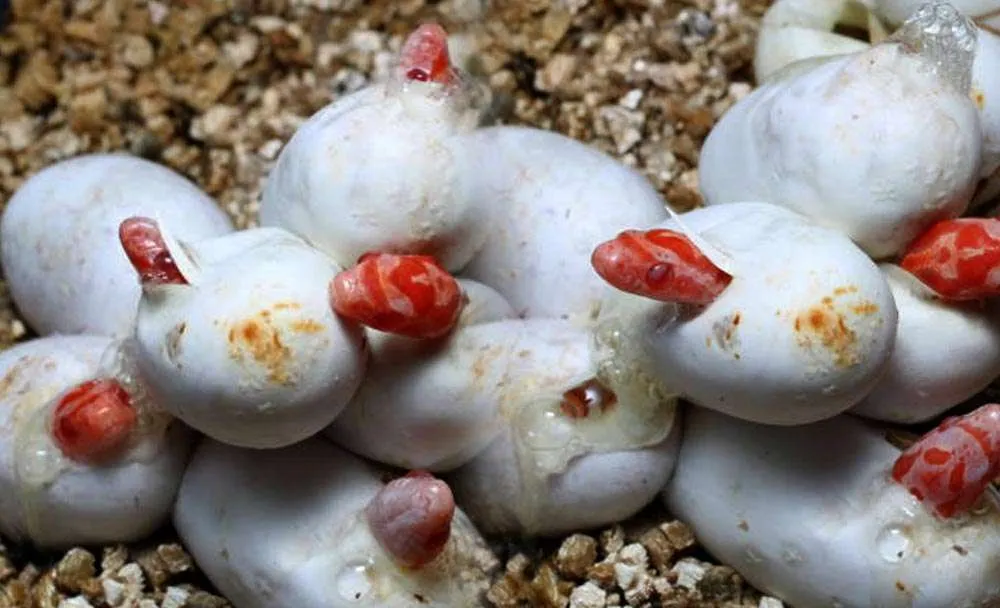One of the most exciting parts of breeding a Corn snake can be incubating the eggs.
Many pet owners prefer to hatch their Corn snake eggs themselves and be part of the process of bringing a new Corn snake to the world.
One of the things they want to know is if they can incubate without an incubator, and how safe or effective they can incubate without an incubator.
This blog post will discuss the steps involved in incubating Corn snake eggs without any incubator.
Incubating Corn Snake eggs without an Incubator
Incubating your Corn snake eggs without an incubator is not arduous.
All you need to do is diligently follow the set down rules, from the beginning to the end.
Let me take you through the process of incubating your Corn snake eggs at home.
Prepare the Egg box:
Before you begin the main incubating, you should get an egg box to hold the egg inside the incubator.
An egg box is necessary to help hold the snake in place during incubation. You can use a box or a tray for this, as long as it can capably hold the Corn snake eggs.
Moreover, ensure the box has a transparent cover to see the inside as the Corn Snake eggs incubate.
Once you have that, make sure the box is clean.
Once the box is clean, you can add an incubation medium.
Using the Right Substrate for Incubating Corn Snake Eggs
These are substrates used to provide humidity for the egg.
These substrates help retain moisture in the box without causing too much saturation.
You can get substrates like sand, vermiculite, potting soil, or sphagnum moss.
These substrates are best for incubating. Once you have your substrate, fill it inside the box until it is half full.
Press Indents into the Substrate
Once done, you can press indents into the substrates. These indents will be where the eggs will be on the substrates.
Ensure you have gaps between the indents, and ensure the indents don’t touch the wall of the egg box.
Get the Eggs:
After getting the substrate and making indents on it, it’s time to collect the eggs.
Remember to first remove the snake from the enclosure before moving the eggs.
When collecting the eggs, please do not put too much pressure on them, as doing so can harm them.
Always keep the right side up when placing the eggs in the box.
To be sure to do it right, mark the top of the eggs with a marker before moving them so you don’t forget which side should be up when placing them in the egg box.
When placing the eggs on the substrate, make sure not to bury them too deep into the substrate.
You only need to make it deep enough to stop the eggs from rolling when you move the box.
You should also ensure the eggs are not touching and cover the egg box with the lid.
Set up the incubator:
If you don’t have an incubator, don’t worry. I will show you how to make a home-grown incubator that can work almost as well as an incubator.
You can build your incubator from everyday items in the house and start incubating Corn Snake eggs without an incubator.
If you want to learn how to incubate Corn snakes, I guess you already have a vivarium or aquarium for keeping snakes or other pets.
And that is where we will start.
If you have an aquarium, place it on a table close to a socket. Fill it half full of water and put a heater at the bottom.
Corn Snake Eggs Incubation Temperature
The next thing to do is to set the Corn Snake egg incubation temperature.
Plug the heater and set the temperature between 78-84 degrees Fahrenheit.
The snake egg incubation temperature in Celsius is 26.56 – 28.89 degrees Celsius.
Incubating the eggs at the right temperature is essential.
The temperature will determine how long the eggs will incubate, the sex ratio of the eggs, and their behavior after hatching (incubating at a low temperature can make the Corn snake slow).
Once you finish doing this, place the egg box with the eggs inside upright in the aquarium and let it float.
Close the egg box and place a thermometer on the medium for easy temperature checks.
Corn Snake Egg Incubation Humidity
Humidity is crucial for incubating Corn Snake Eggs, and you should take it seriously.
The right humidity level for a Corn snake egg is 75% to 90%.
If your Corn snake eggs don’t have the proper humidity, they may start losing weight or shrinking.
Without an incubator, you can still change and maintain the proper humidity.
To maintain humidity, place a bowl and sponge inside the egg box.
Just make sure to keep the water bowl away from the hatching eggs, so they won’t drown in it.
You can even cover it with mesh to disguise it.
It would help if you got a hygrometer to help check the humidity level.
Incubating:
After setting up, the next thing is to be patient.
The length of the incubating period now depends on the temperature in the incubator.
And just because you want a faster incubation period doesn’t mean you should increase the temperature indiscriminately.
That can be dangerous to the eggs.
How long does it take Corn Snake Eggs to Hatch?
All things being equal, your Corn snake eggs should hatch between 58 and 62 days.
During this incubating period, you should watch out for some signs.
Always check through the lid of the Egg box.
A healthy Corn snake egg should be plump, firm, and round.
The opposite is when the egg isn’t healthy – it will look tiny, shriveled, and dehydrated.
If your Corn snake egg turns dark from dehydration, it may be due to the humidity level in the incubator. Add a little water.
Corn Snake Egg Candling:
Candling is the process of holding your Corn snake egg in a right-side-up position in a dark room using a light source.
Moreover, candling helps to check whether the egg is fertile and is about to hatch.
If the egg is fertile, it will show dark matter inside the egg.
The dark matter is the Corn snake. If, at first, you can’t separate between a fertile and infertile egg, don’t worry; it takes experience.
Do not move around too much. Gently check and return safely.
I advise you not to candle more than twice, and always wait for a month after candling before doing it again.
Once you know that an egg is infertile, you should remove the said egg from the incubator.
Corn Snake Egg Hatching:
Hatching is the end of the incubation period.
You can expect all the eggs to hatch within a day or two.
The Corn snake will break the egg with an egg tooth at the front of its nose.
Some Corn snakes may prefer to remain in the egg, even after breaking it, to feed on the yolk sac for up to three days.
Do not remove the snake from the egg. Let it come out by itself.
What to do if your Corn snake egg doesn’t Hatch?
You should be patient if your snake egg doesn’t hatch with the others or if it takes a long time for the snake to come out of the egg.
While the steps involved in incubating Corn Snake eggs without an incubator are straightforward, sometimes things may not go as planned.
Therefore, you should call a veterinarian if it still doesn’t hatch or come out of the egg.
Do not try to hatch or break the eggs yourself.
Conclusion
You can incubate your Corn snake eggs at home without an incubator.
All you have to do is follow a set rule to imitate the environment of an incubator successfully, and your Corn snake egg will be okay.
You need first to prepare the egg box, then get the eggs and put them inside the egg box.
After this, you should set up your incubator and then be patient during incubation.
After this comes the candling and the hatching.






